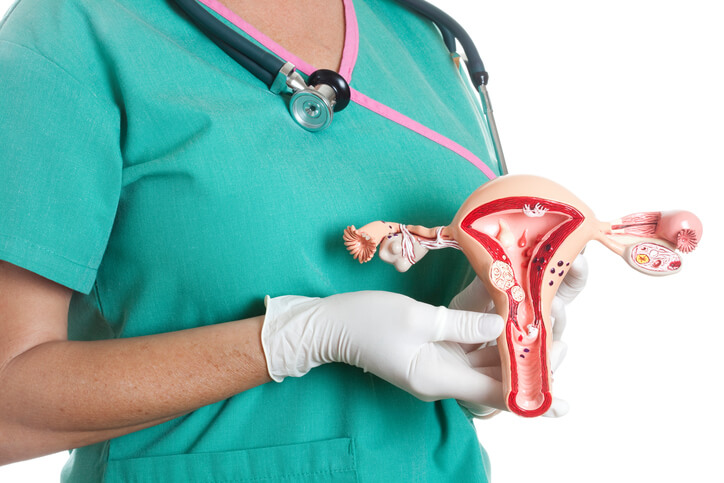
The uterus is a strong muscular organ in the female reproductive system, in an area commonly known as the womb. The uterus is responsible for the development of the embryo and fetus during pregnancy. During pregnancy, the uterus expands in order to make enough room to hold a baby to full term. When it is time to give birth, the uterus plays a critical role. Uterine contractions occur, and increase in intensity and frequency during childbirth, allowing the cervix to fully dilate, so the woman can then push the baby out of the vagina.
The pelvis is the area of the body between the hip bones, which is comprised of the vagina, cervix, uterus, bladder, urethra, intestines, and rectum. These organs, including other various muscles, tissue, and ligaments, are held in place inside the pelvis. However, when this support system becomes stretched or torn, it allows pelvic organs, such as the uterus, to sag down and slip out of their normal places, resulting in a condition called prolapse. According to the Cleveland Clinic, more than one-third of women in the United States have some sort of pelvic area prolapse.
Having a prolapsed uterus (uterine prolapse) commonly occurs as a result of the pelvic tissue and muscles becoming weakened and relaxed overtime. For example, during childbirth, this can be due to having a difficult labor, or delivering the baby vaginally. Uterine prolapse also is caused by surgery (hysterectomy), menopause, other abdominal conditions, and even genetic and hereditary factors.
Also, as women age, the concentration of the hormone estrogen decreases, which causes the uterus to sag downward into the vagina, sometimes too much, that it completely comes out of the vaginal opening. The stages of a prolapsed uterus are as follows:
Stage 1: The cervix starts moving down into the vagina
Stage 2: The cervix reaches the opening of the vagina
Stage 3: The cervix is outside of the vagina
Stage 4: The entire uterus is outside of the vagina (This condition is called procidentia, caused by weakness of the ligaments that hold the uterus in place)
A physical exam is needed to diagnose uterine prolapse. If additional information is needed, your gynecologist will perform a series of tests to measure how well your pelvic organs are working.
To treat and prevent this condition from occurring, a number of treatments and procedures can be done. These include:
- Hysterectomy: This is the surgical removal of the uterus (This is for severe cases of uterine prolapse)
- Uterine suspension: This puts back your uterus in the correct position, by connecting tissue to the lower uterus, or using a mesh material to form a sling to hold it in place
- Kegel exercises: These are exercises that are beneficial for a woman, as they can tighten and relax the muscles that control the flow of urine, in order to strengthen the pelvis and the organs within
- Taking estrogen hormones: Taking estrogen will help prevent the weakening of the pelvic muscles
- Vaginal pessary: A removable plastic or rubber device is inserted into the vagina, as a form of support in the uterus, where the prolapse occurs. This is a procedure done when the patient wants to avoid surgery, or has other complications, making surgery too much of a risk
To learn more about uterine prolapse and how it is treated, call University OB/GYN Associates at (315) 464-5162 to request an appointment or request an appointment online.



